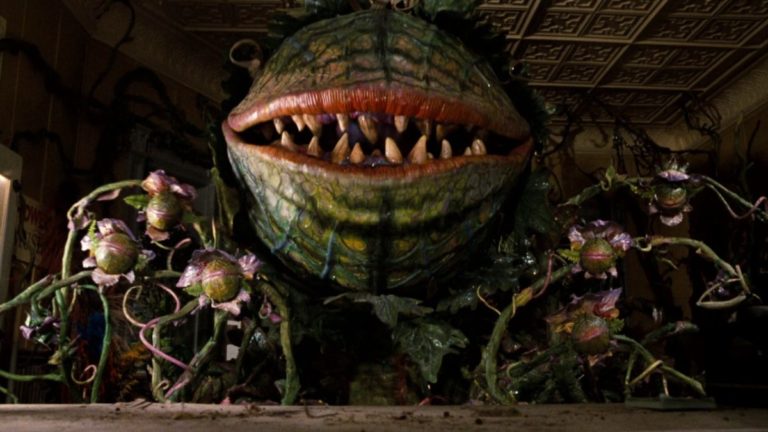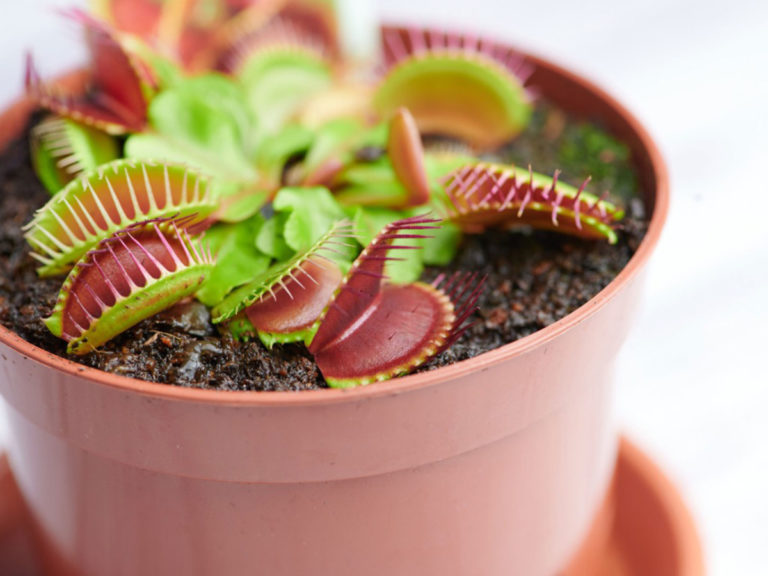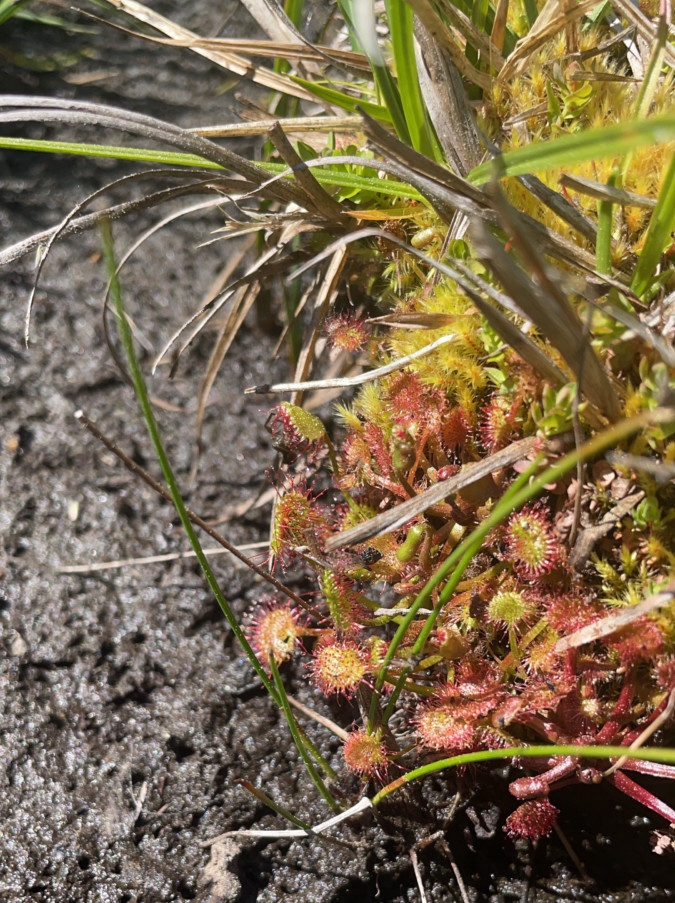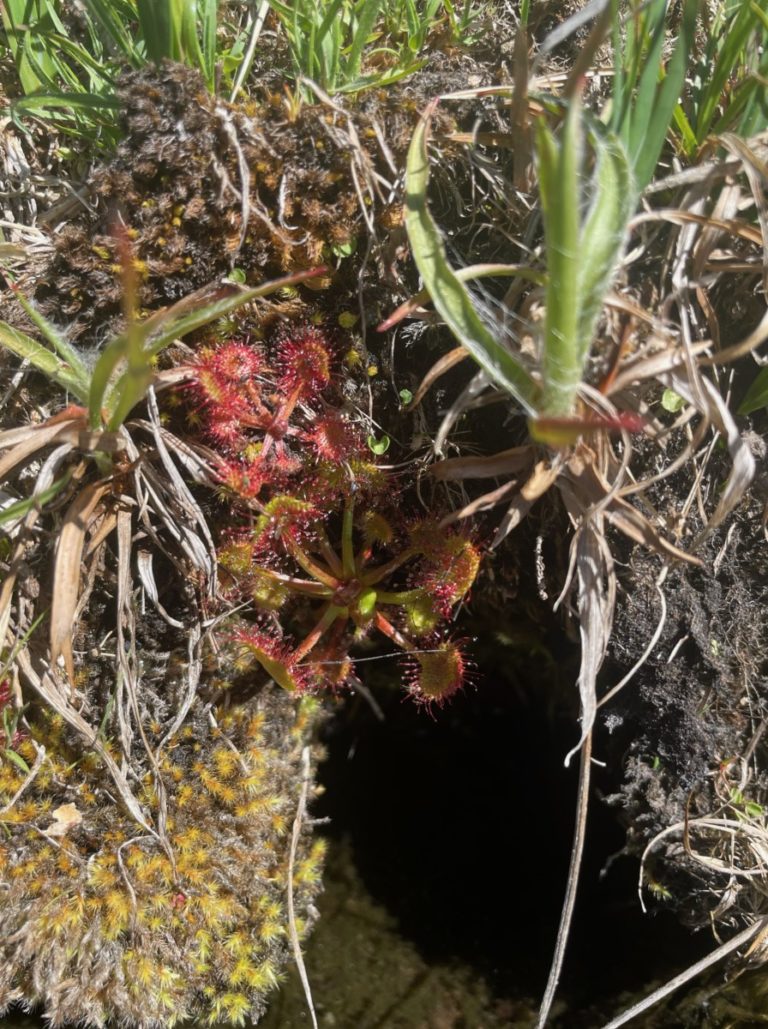You’ve seen them in the movies……….

You may have them growing in a pot in your house…….

But did you know that we have our very own carnivores plants right here in the Stanislaus National Forest?!?!? Yep that’s right! Deep in the forest tucked away in fens (a type of peat-accumulating wetland fed by mineral-rich ground or surface water) you will find the tiny roundleaf sundew (Drosera rotundifolia.)


Sundews are distinguishable by the greeny-red leaves of the round-leaved sundew are covered in red 'hairs' and arranged at the base of the plant in a rosette. The white or pink flowers appear in summertime at the top of hairless, red stems. The round-leaved sundew can be distinguished from the oblong-leaved sundew by the rounder shape of its leaves.
Sundews are “flypaper” plants that trap prey in sticky hairs on their leaves. They make up one of the largest groups of carnivorous plants. Long tentacles protrude from their leaves, each with a sticky gland at the tip. These droplets look like dew glistening in the sun, thus their name. The glands produce nectar to attract prey, powerful adhesive to trap it, and enzymes to digest it. Once an insect becomes stuck, nearby tentacles coil around the insect and smother it. Sundews can kill a trapped insect in about 15 minutes but may digest it over a few weeks.
CSERC has worked tirelessly over the years to protect these special little plants that are so unique to our forest/meadow ecosystem. In multiple meadows across the forest, we have put up fencing to keep grazing cattle from trampling their marshy habitat.
If you are interested in helping protect the sundew and other sensitive plants throughout the National Forest please contact Sara at [email protected] to sign up for future volunteer events.

